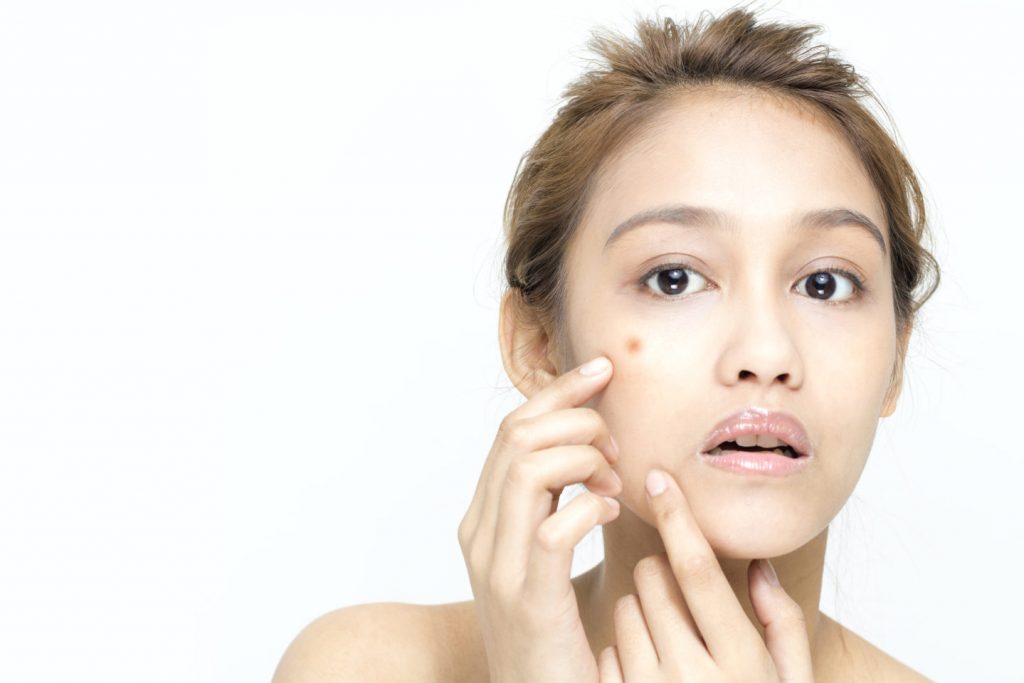Singapore has a tropical climate that prevails throughout the year. The humidity can be good for the skin but in combination with high temperatures, it increases perspiration and excess oil production. Trapped moisture often leads to skin infections caused by certain bacteria and fungi, which often thrive in this climate.
One of the more common bacterial infections we encounter in the clinic is folliculitis. This is an infection of the hair follicles. It presents as a red pimple around the hair roots. If not treated in time and in immune compromised patients, it can spread to the deeper areas of the skin causing boils or abscesses.
Cellulitis, on the other hand, is a more serious skin infection that affects the deeper layers of the skin. It usually occurs through a break in the skin e.g. cut or insect bites. Patients with underlying diabetes or eczema are more prone to developing cellulitis. Usually one part of the body e.g. the leg or arm becomes swollen, red, tender and warm to touch. A fever may also develop. Hospital admission and treatment with intravenous antibiotics can sometimes be necessary.
Impetigo is another bacterial skin infection that is contagious and spreads usually amongst children who are in close contact to one another. Patients with underlying eczema are more prone to getting impetigo. Blisters usually form and when broken down, leave yellow crusts around the nose, mouth and legs.
Fungal skin infections may present in various ways. Pityriasis versicolor or “white spots” is caused by a yeast organism that commonly lives on the skin of humans. The infection is more common in young and active people who perspire heavily. Flaky discoloured patches appear on the chest and back causing either no symptoms or a mild itch.
The term ringworm refers to a common type of fungal infection of the skin that takes on a ring-like configuration. Commonly affected moist areas are the groins, inner thighs, feet and buttocks. Affected areas appear dark surrounded by a ring of red, scaly bumps. Itch is common.
Tinea pedis or “athlete’s foot” is a fungal infection of the feet, often affecting the web spaces between the toes, with moist soft skin that peels off easily. The soles tend to appear scaly. The toenails can also be affected and look unhealthy, with a yellowish discolouration and thickening seen under the nails.
Common viral skin infections we encounter in Singapore are viral warts or verruca. They are small flesh-coloured lumps with a rough surface found on the soles of the feet and palms of the hands. When they affect the soles, they are often mistaken for corns.
Molluscum contagiosum is caused by a virus different from that which causes viral warts. This infection usually occurs in children. They appear as small whitish or skin-coloured, shiny, dome-shaped lumps, sometimes with a small depression in the centre. Molluscum can spread from one area of the body to another through scratching. They can also spread from person to person.
Prevention of skin infections is essential by keeping the skin dry and practicing good personal hygiene. Practice good hand hygiene and avoid scratching insect bites and warts. Wash off sweat with mild soap and water and keep skin folds dry. Avoid walking barefooted on moist areas e.g. swimming pools and common showers. Avoid sharing towels and try to change your footwear, alternating between two pairs of shoes to allow them to dry out.
Written by Dr. Vinu Sahlén (Zweiter Abschnitt Certificate (Aachen, Germany), MRCS (UK). Dr Vinu is based at IMC Camden and speaks English, German and Swedish. If you could like to book an appointment with Dr Vinu, please call 6733 4440 or use our website: https://www.imc-healthcare.com/appointments/

































